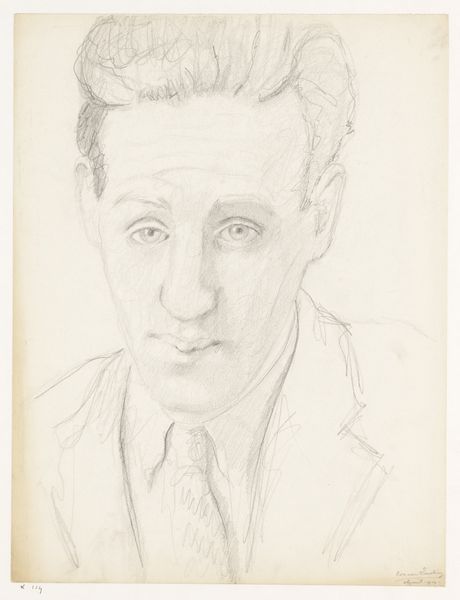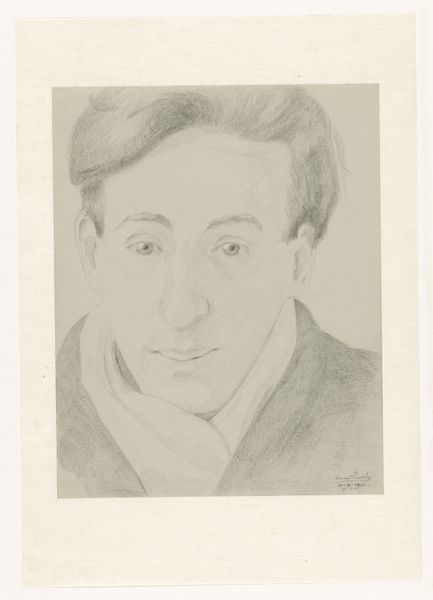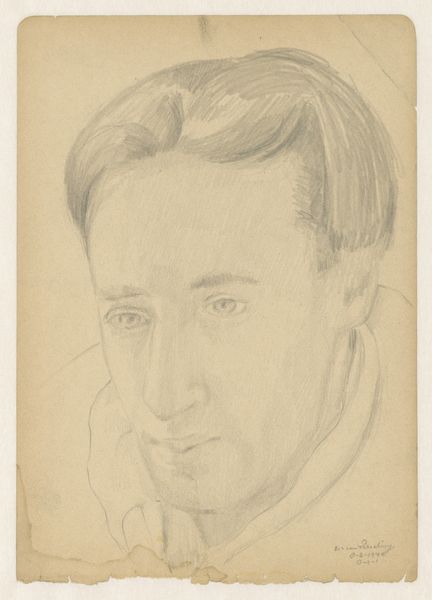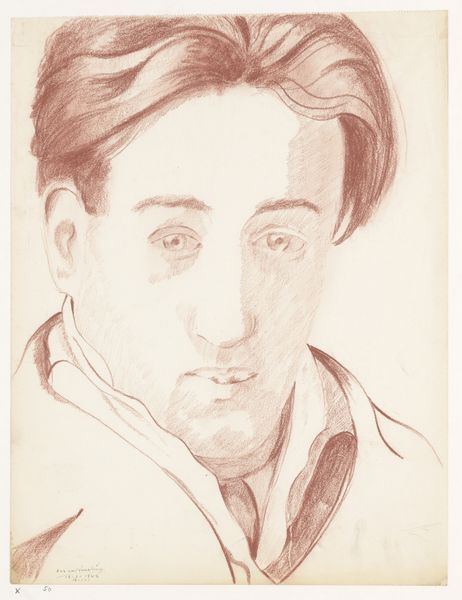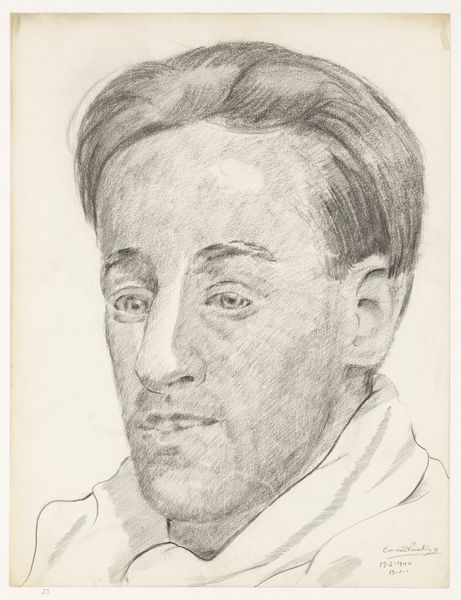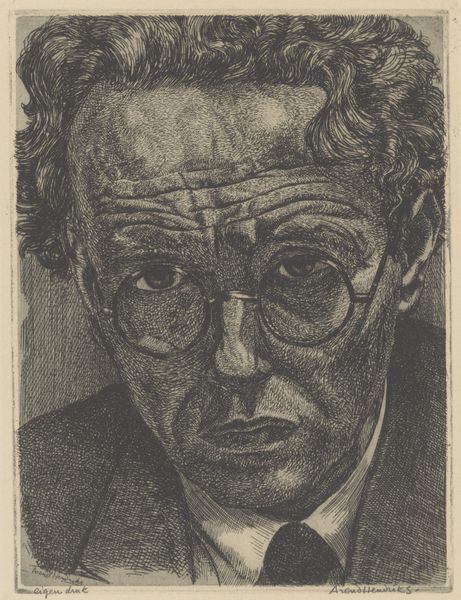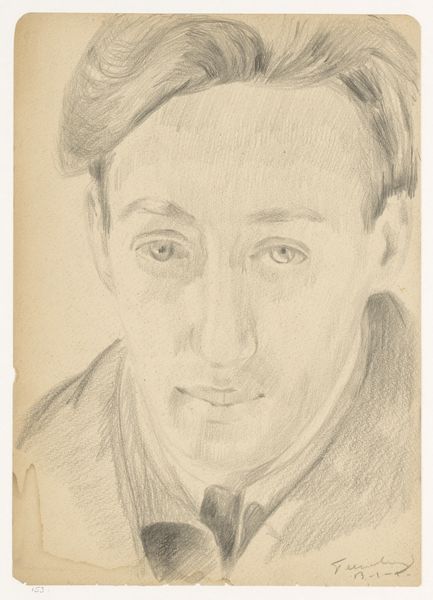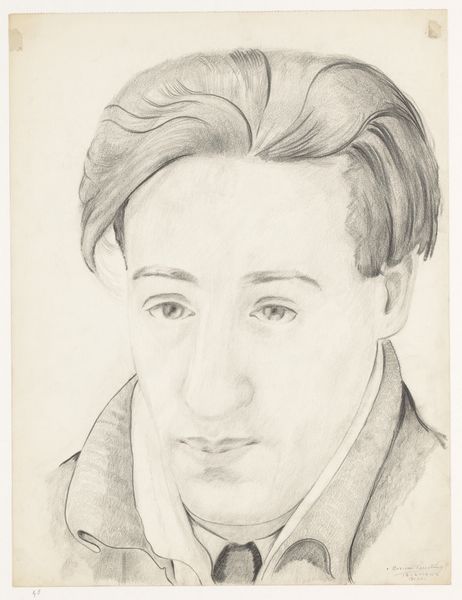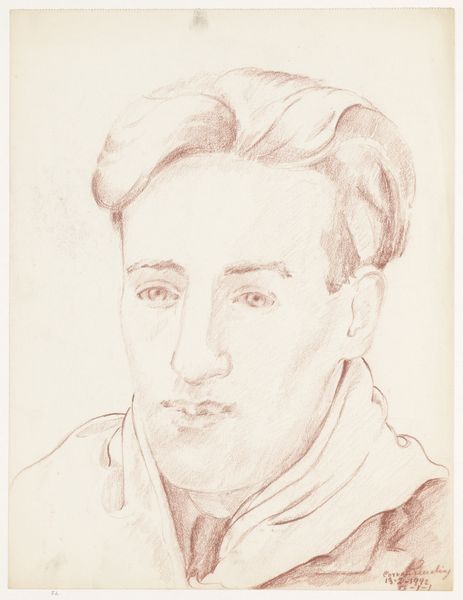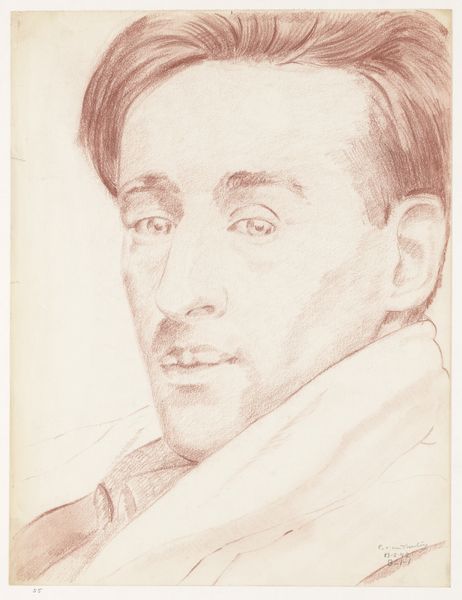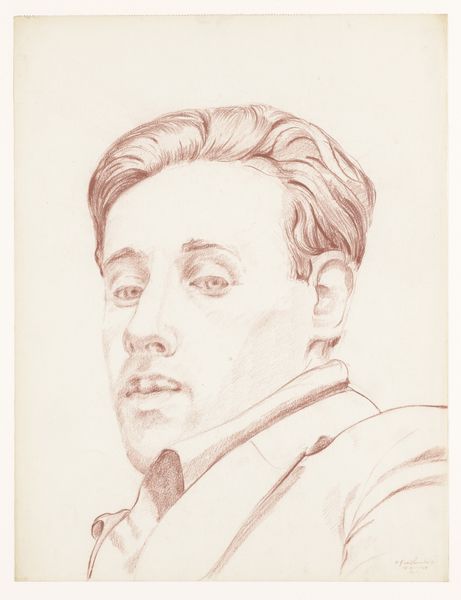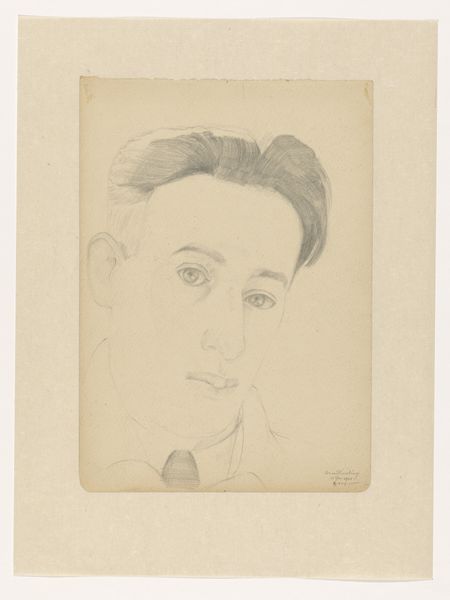
photography, gelatin-silver-print
#
portrait
#
photography
#
historical photography
#
gelatin-silver-print
#
modernism
Dimensions: sheet (trimmed to image): 9.1 × 11.6 cm (3 9/16 × 4 9/16 in.) mount: 34.2 × 27.5 cm (13 7/16 × 10 13/16 in.)
Copyright: National Gallery of Art: CC0 1.0
Curator: This striking gelatin-silver print, taken in 1925 by Alfred Stieglitz, presents us with a portrait of the writer Jean Toomer. My first impression? It's incredibly intimate, almost like a stolen moment. The stark contrast and close framing lend it a vulnerability. Editor: There’s a compelling ambivalence to it. I find it less about vulnerability and more about a poised self-possession. The gaze is direct, almost challenging the viewer to truly understand him. I think it embodies the Modernist interest in capturing the psychological state of the subject. Curator: You’re right, the intensity is palpable. Knowing Toomer's literary work, his exploration of identity and the complexities of the African American experience in the early 20th century, do you see that mirrored in Stieglitz's portrayal? Editor: Absolutely. Stieglitz was deeply engaged in documenting the cultural landscape of his time. Consider, this portrait was made during the Harlem Renaissance, a pivotal movement where artists and intellectuals were redefining black identity. A symbol of the changing American demographics. Curator: Precisely! The choice of stark black and white intensifies this. By minimizing extraneous detail, Stieglitz guides our focus to Toomer’s face, making the symbolism so strong that it evokes layers of narrative: personal, cultural, historical. Editor: The cloudscape in the background almost feels like a metaphor too, doesn’t it? Shifting, amorphous... reflecting the fluid nature of identity itself. In a moment, an instant, capturing a time of great socio-political complexity. Curator: It speaks to Toomer's own grappling with his racial identity, too. He sought to transcend categorization, identifying simply as American, while his work grappled with the nuances of racial experience. And perhaps, that is what Stieglitz aimed to immortalize with the help of his camera? A single captured, unreplicable moment. Editor: A photograph laden with nuance and history – it captures the Modernist era’s introspective mood perfectly, a moment from an individual to an entire social turning point. Curator: For me, revisiting this work has highlighted how art continues to serve as a time capsule, preserving complex personal and collective identities. Editor: Agreed. It serves as a stark reminder of the power of portraits in art.
Comments
No comments
Be the first to comment and join the conversation on the ultimate creative platform.

